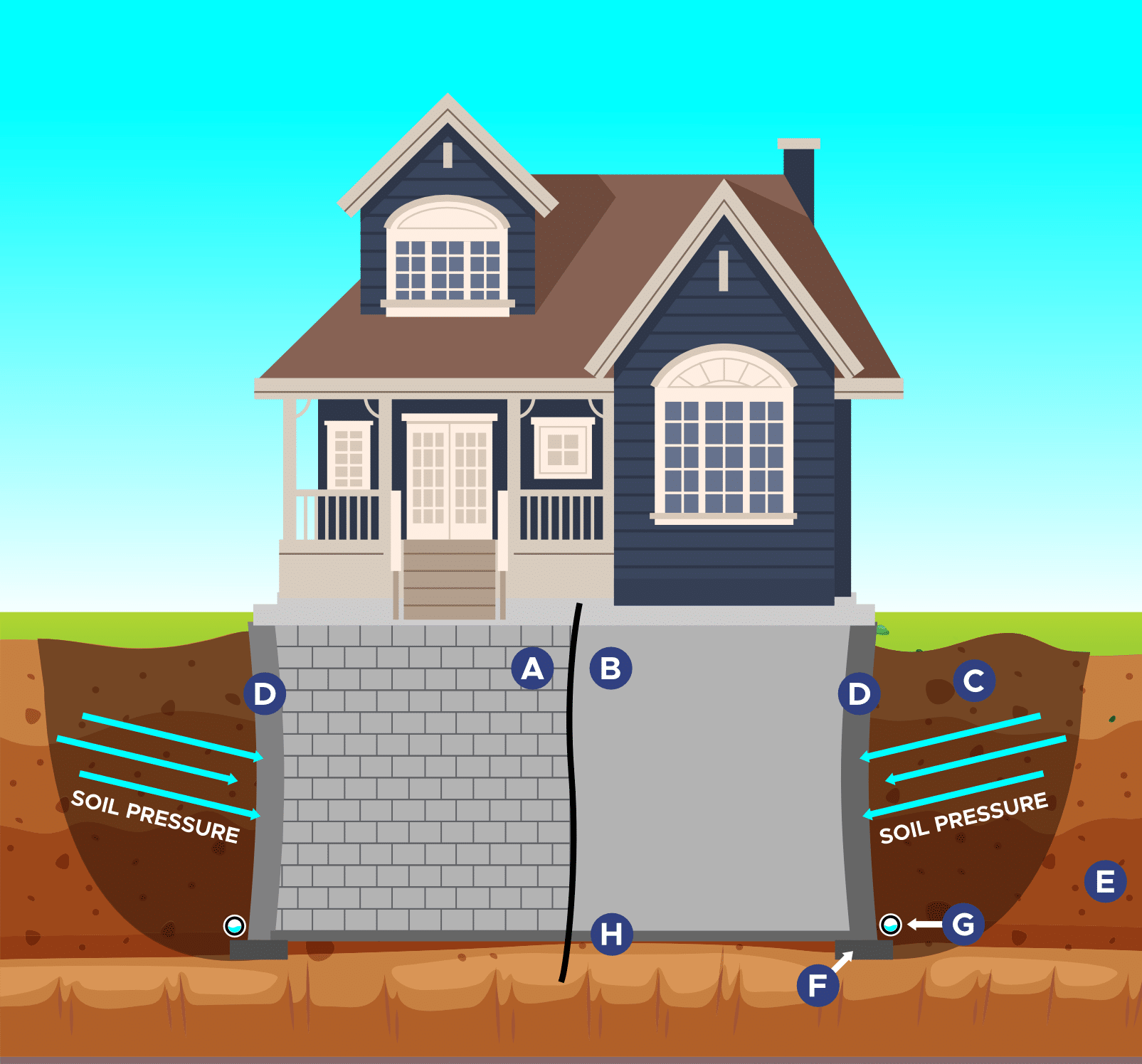Can my house foundation be fixed?
WHY DOES MY BASEMENT WALL CURVE INWARDS?
Why does my foundationThe structural base that transfers the building’s load to the ground. More have issues?
HYDROSTATIC PRESSURE
Regardless if your home has a cinder block foundationThe structural base that transfers the building’s load to the ground. More or a poured concrete foundationThe structural base that transfers the building’s load to the ground. More. Both are susceptible to pressure from the surrounding soil.
Regardless if your home has a cinder block foundationThe structural base that transfers the building’s load to the ground. More or a poured concrete foundationThe structural base that transfers the building’s load to the ground. More. Both are susceptible to pressure from the surrounding soil.
Soil pushing against your foundationThe structural base that transfers the building’s load to the ground. More is a phenomenon referred to as “hydrostatic pressure”.
This can occur due to several reasons:
Expansive SoilSoil that swells when wet and shrinks when dry, causing foundation movement. More: Certain types of soil, like clayFine-grained soil that expands when wet and shrinks when dry, often causing foundation movemet. More, expand when they absorb water. This expansion creates pressure against your foundationThe structural base that transfers the building’s load to the ground. More walls. Causing them to bow inward or crack.
Poor Drainage: If water doesn’t drain properly away from your house. It can accumulate around the foundationThe structural base that transfers the building’s load to the ground. More. Over time, this water exerts pressure on the foundationThe structural base that transfers the building’s load to the ground. More walls.
Frost Heave: In colder climates, water in the soil can freeze and expand. Pushing the soil outward and against the foundationThe structural base that transfers the building’s load to the ground. More. When the ice melts, the soil contracts. But the repeated cycles of expansion and contraction can damage the foundationThe structural base that transfers the building’s load to the ground. More.
Backfill Issues: Improper backfilling during construction. This can lead to soil settlementSinking of a foundation due to soil compaction or movement. More or movement. Causing more pressure on the foundationThe structural base that transfers the building’s load to the ground. More.
Water TableThe water table is an underground level below which the soil is saturated with water. More Fluctuations. Changes in the water tableThe water table is an underground level below which the soil is saturated with water. More level can also affect soil pressure. When the water tableThe water table is an underground level below which the soil is saturated with water. More rises. It can increase the hydrostatic pressurePressure from water in the soil pushing against foundation walls. More against the foundationThe structural base that transfers the building’s load to the ground. More.
Soil Erosion: Erosion can create voids and uneven pressure distribution around the foundationThe structural base that transfers the building’s load to the ground. More. Leading to structural issues.
Basement Flood Protection Checklist
If your basement is susceptible to becoming musty or has small pools of water in the spring, there are a few things you can do to help reduce the risk. See the checklist.
If you always have water in your basement, we can help fix your basement foundationThe structural base that transfers the building’s load to the ground. More. Request a basement repair quote.
There are two types of basements: those that leak and those that will leak unless repaired.
REQUEST A BASEMENT
FOUNDATION REPAIR ESTIMATE
If your home signs of water seepage, uneven floors, cracks in walls or basement floor, gaps between floors and walls or shrinking soil around the foundationThe structural base that transfers the building’s load to the ground. More.
We also provide Free Quotes for Sidewalk & Driveway Replacement, Garage Pads, and Patios.



